5 mind-boggling things about 'The Coming War on China': Pilger's documentary airs on RTD
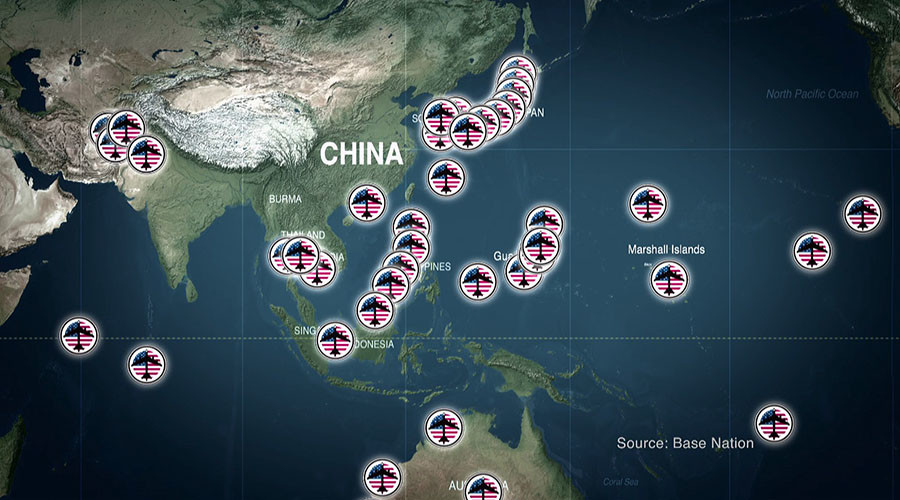
With dozens of US military bases encircling China with a "giant noose," and America's historic nuclear presence in the Pacific region, a war between the greatest military power and the world's second largest economy "is no longer unthinkable," journalist John Pilger says.
In his documentary, 'The Coming War on China,' which is being aired on RT's documentary channel RTD this weekend, the multi-award winning journalist and filmmaker claims he aims "to break the silence." Pilger sets out several remarkable historic facts which bear testament to America's "sabre-rattling" in the Asia Pacific.
In the West, "the threat of China is becoming big news, the media is beating the drums of war as the world is being primed to regard China as a new enemy," the UK-based Australian journalist says. The mainstream media such as CNN get exclusive access to classified US surveillance flights over disputed islands in the South China Sea, which "have become a flashpoint for war between China and America."
China No. 1 close reconnaissance target for US – think tank https://t.co/YHDs215o4E— RT (@RT_com) November 25, 2016
But "what is not in the news is that China itself is under threat."
"American bases form a giant noose encircling China with missiles, bombers, warships all the way from Australia through the Pacific to Asia and beyond," Pilger's documentary states. As one of the film's contributors, author of 'The China Mirage' book, James Bradley put it, "if you were in Beijing and stood on the tallest building and looked out at the Pacific Ocean, you would see American warships, you would see Guam is about to sink because there are so many missiles pointed at China."
‘First in 28 years’: ‘USS Pennsylvania’ ballistic-missile sub comes to Guam, Pacific Ocean https://t.co/kxnj8IMLD9pic.twitter.com/1ZWGgHXcBt— RT America (@RT_America) November 1, 2016
'The Secret of the Bikini Islands'
The site of US atomic bomb testing for many years, which notoriously lent its name to the swimsuit design, the Bikini Atoll within the Marshall Islands is "America's strategic secret." Lying in the vast Pacific Ocean between the US and Asia, the "once bountiful" atoll is a "stepping stone to Asia and China" for the US.
In 1946 the US took over the Marshall Islands as a trust territory, but turned it into a "laboratory for the testing of nuclear weapons, and its people into guinea pigs," the film says, adding that effects of the atomic bomb were also tested on animals.
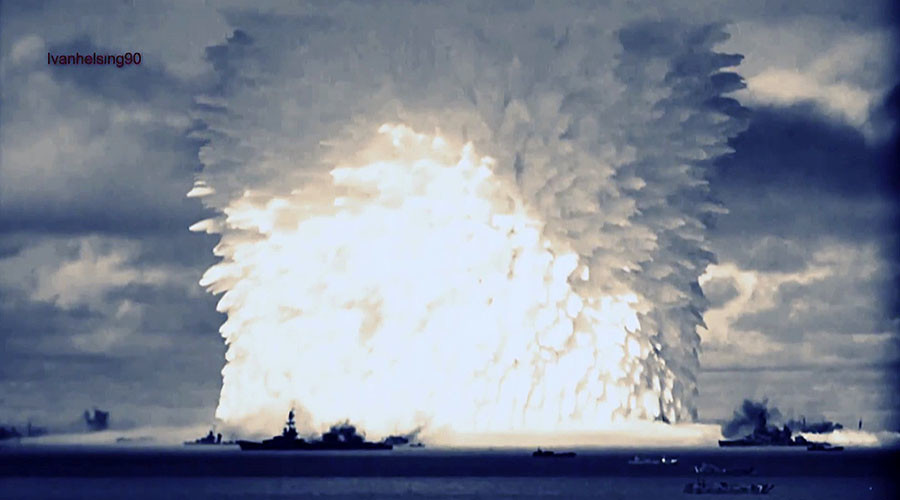
While the revealing swimsuit was named after US H-bomb detonations in Bikini Atoll, the bodies of the people on the islands were less celebrated than its wearers. They were among "the most radiated in the world."
With test sites at sea, in the air, on reefs and underwater, the total yield of the nuclear experiments on and around the Marshall Islands was equal to 7,200 Hiroshima bombs, meaning the equivalent of more than one Hiroshima bomb was exploded in the area every day for 12 years, Pilger says. Bikini Island is till nowadays unfit for human life, he adds.
The area surrounding the crater of one of the greatest man-made explosions, from a hydrogen bomb called 'Bravo', is "by far the most contaminated place on Earth," the film cites a US atomic energy official as saying. "It will be interesting to get a measure of human uptake when people live in a contaminated environment," the official added, while the film explores the sufferings of the atoll locals, many of whom died of cancer.
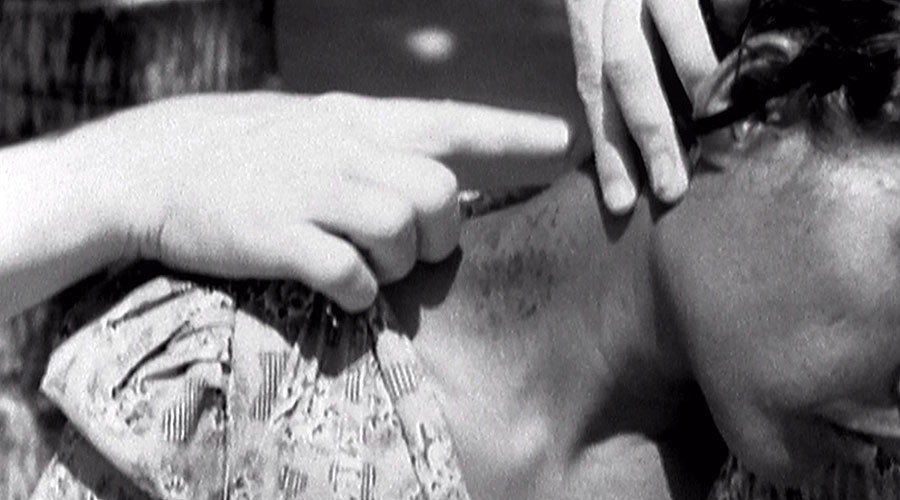
"What the Americans did was no accident. They came here and destroyed our land. They came to test the effects of a nuclear bomb on us," a local woman told the filmmaker.
'Apartheid in the Pacific'
Moving to another American base in the region, cited as "one of its most important and secretive" locations, known as the Ronald Reagan Test Site, the journalist explores the US missile launch pad that, according to him, "commands the Pacific Ocean all the way to Asia and China."
With weapons of mass destruction being "designed for a coming war," the base is part of a "remarkable" US Space Command plan known as Vision 2020. Devised in the 1990s, it's aim is officially described as "full spectrum" dominance, the film says.
But while Washington spends huge amounts of money on military ambitions, with the US Air Force testing its intercontinental missiles by firing them at the Marshall Islands from California almost 5,000 miles away, locals have been subjected to poverty.
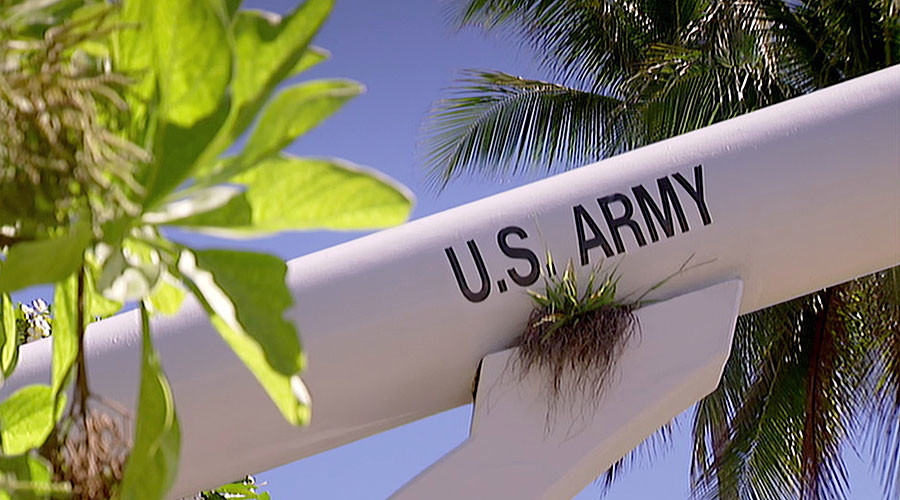
America's treatment of people living across the bay from the US base is called the "Apartheid of the Pacific" by Pilger, and their native island "the slum of the Pacific." More than 12,000 people, most of whom are refugees from what is now a US missile base, and from islands poisoned by nuclear testing, are brought to work on that very base site to water golf courses for the Americans. After a whole day of work, they are "ferried back to their poverty."
'Island people against the greatest military power on Earth'
Japan's island of Okinawa has become the "frontline of a beckoning war with China," while the outstanding non-violent resistance of the local people challenges US' pivot to Asia.
The documentary reveals that in 1962 America's atomic weapons were almost launched from the island, when a military base there allegedly received an order to prepare an attack on China, but then was abruptly ordered to stop. One of the American servicemen whose job was to fire Mace cruise missiles told Pilger that China was Washington's nuclear target during the Cuban missile crisis.

"We must not have the misery of war ever again," one of the leaders of the protest movement on Okinawa told the journalist, adding that her "duty" as a survivor of World War II is to see the US military bases leave the Japanese island.
Yet, American aircraft are constantly flying low on Okinawa, the film shows, with its author saying that "the threat is a constant presence."
Teachers often can't teach because of the noise and the fear, with a memory of a US fighter crashing into Miyamori Elementary School and surrounding houses still vivid for many. Back in 1959, the pilot ejected to safety, but the plane caused carnage, with over 200 people, mostly children, having been killed and injured in the accident.
"Another tragedy waits to happen on Okinawa, with US military aircraft having been involved in 44 accidents on the island," Pilger says, while also recalling cases of violence and sexual assault against local women, allegedly committed by American servicemen.
One more outstanding "US war station" is located on the South Korean island of Jeju, where a resistance movement has also been persistent against America's naval base. "One of the most provocative military bases in the world" has been built on the world heritage site land, less than 400 miles from Shanghai.
According to the film, it's aimed at China's lifelines to the world in oil trade and resources.

There are also numerous secret bases constructed by Washington within a hosting country base to disguise the US presence, with such locations generally not referred to as "bases," the film claims. Many have been "set up to combat China's worldwide economic influence," while bases on China's doorstep are "a provocation of war."
'Gold mine of drugs' and Mao 'paranoia'
Starting from the 19th century, an anti-Chinese "racial stereotype" has been spread across the United States.
According to the film, such a policy concealed a deeper agenda – opium. For the American elite back then China was a "gold mine of drugs."
Warren Delano, the grandfather of America's 32nd president Franklin D. Roosevelt, "was the American opium king of China," author James Bradley says. "Much of the east coast of America – Columbia, Harvard, Yale, Princeton were born from opium money. The American industrial revolution was funded by huge pools of money which came from illegal drugs [from] the biggest market in the world – China," he says, adding that of course it wasn't talked about, but called it "the China trade."
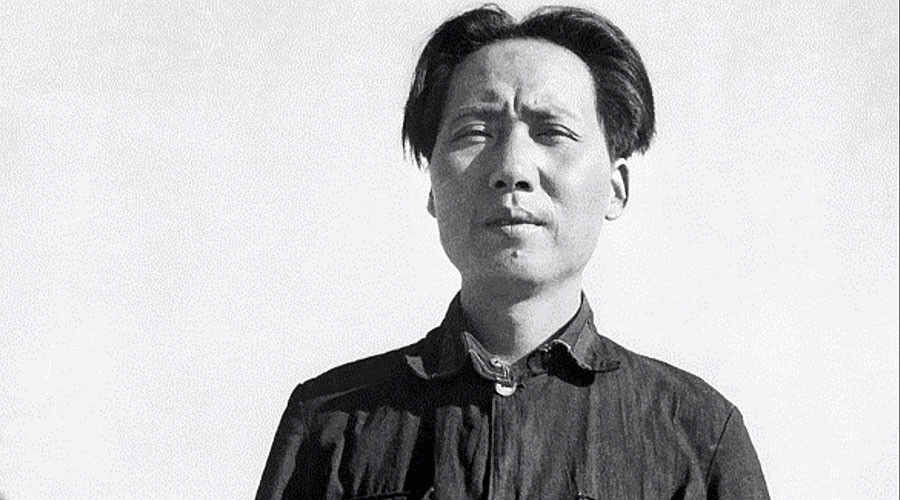
Later in the 20th century, a new way to present China as a threat was invented, with Mao's revolution having ignited paranoia in Washington. With Richard Nixon proclaiming China "the basic cause of all of our trouble in Asia" in 1953, the father of the H-bomb, Edward Teller over a decade later claimed a defense was needed against the eastern power.
"I believe that for the sake of our safety it is necessary to be prepared for the possibility of a Chinese missile attack on the United States," the film quotes him as saying.
"China ... matched America at its own great game of capitalism, and that is unforgivable," Pilger says. The journalist uncovers a secret message that was sent by Mao Zedong to Washington five years before the communist revolution of 1949. "China must industrialize right now, this can only be done by free enterprise. Chinese and American interests fit together economically and politically. America need not fear that we will not be cooperative – we cannot risk crossing America, we cannot risk any conflict," Pilger cites Mao's message as saying.
But the Chinese leader got no reply, and his "reaching hand was tossed away," as Bradley put it.
'Smartest weapons need enemies, money is the prize'
The film suggests that a "stereotype of communist dictatorship" is widely spread by the US, preventing from understanding "China as it is."
"In America you can change political parties but you cannot change the policies. In China you cannot change the party, but you can change policies ... China is a vibrant market economy, but it is not a capitalist country," entrepreneur and social scientist, Eric Li says. He adds that in China, "capital does not rise above political authority," and there is no way a group of super rich people can control the politburo, "as billionaires control America's policy making."
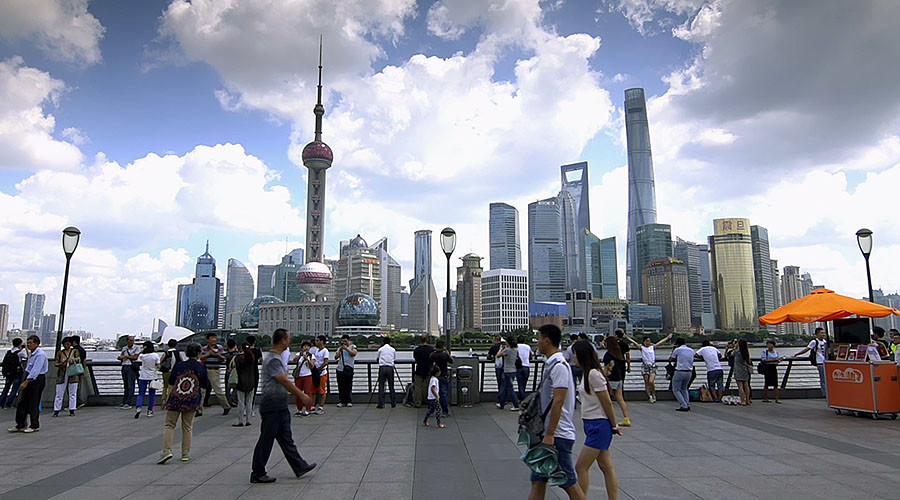
The Chinese government is "not trying to run the world, they are not even trying to run Asia Pacific. I think they want to keep America from dominating [the region], so they have what they believe is their rightful place because of the long history of civilization," Li says, adding that Chinese "objectives are really modest compared with their capacity."
As the world's economic power moves rapidly towards Asia, the response of the United States is to deploy the majority of its naval forces to the region, according to Pilger. "This massive military build-up is known in Washington as the pivot to Asia. The target is China," he says, also citing president Barack Obama, who in 2011 said that creating an American presence in the Asia Pacific was his "top priority."
US dominates global arms sales – study https://t.co/9XC4v2HgYC— RT (@RT_com) December 6, 2016
"For America's unchallenged arms industry, the annual prize is huge profits from almost $600 billion of military spending," the journalist suggests, adding that "the smartest weapons need enemies."
With the current situation in the South China Sea, "the danger of confrontation grows by the day."
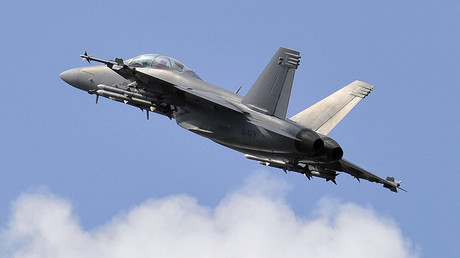



Geen opmerkingen:
Een reactie posten